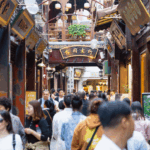Zhujiajiao, praised as the “Pearl of Jiangnan” nestled beside Dianshan Lake, was listed as one of Shanghai’s four major historical and cultural towns in 1991.
Today, with its nine ancient streets and over a thousand old houses along the water, this thousand-year-old town is rejuvenating in a new era of historical preservation and cultural tourism innovation, becoming a unique scenic spot in Shanghai.

Zhujiajiao Town boasts abundant tourism resources. The ancient town area has developed and opened more than 20 attractions, including Kezhi Garden and the Qing Dynasty Post Office.
Famous temples include the Zhujiajiao City God Temple and Guan Wang Temple (Baoguo Temple). Notable historical sites include Yuanjin Zen Temple, one of the twelve scenes of Qinghua Pavilion.
The ancient town’s several old streets run alongside the water, with more than a thousand houses built by the river.

The numerous bridges are a major feature of the ancient town, including multi-arch bridges and single-arch bridges, stone, wooden, and mixed stone-brick-wooden bridges, arched and flat bridge decks, and open and covered bridges (corridor bridges).
There are also many steps and platforms leading directly to the water surface, which have been convenient for residents to wash rice, vegetables, and clothes, as well as to moor sampans and wupeng boats since ancient times.
Zhujiajiao Yuanjin Zen Temple
Yuanjin Zen Temple, built during the Zhizheng years of the Yuan Dynasty (1341), is located by the Caogang River and is a famous ancient temple in the town.
Inside the temple, there is a statue of the Chenzhou Holy Mother, so it is also known as the “Niangniang Temple.” The structure is small and exquisite, with few but finely carved and dazzling Buddha statues, creating a solemn atmosphere.

Opening hours: 08:30-16:30
Zhujiajiao Kezhi Garden
Kezhi Garden is the largest garden architecture in Zhujiajiao Town, commonly known as “Ma Family Garden.” It embodies the essence of Jiangnan gardens, with a grand scale and a complete array of pavilions, terraces, buildings, rockeries, pools, ancient trees, and famous plants.
The entire manor consists of three main parts: the hall area, the rockery area, and the garden area, covering an area of 96 mu (6.4 hectares).
Although it has been built for less than a hundred years, with ancient trees towering and famous plants surrounding the walls, it vividly reflects the rural life of the Qingpu officials during the Republic of China period.
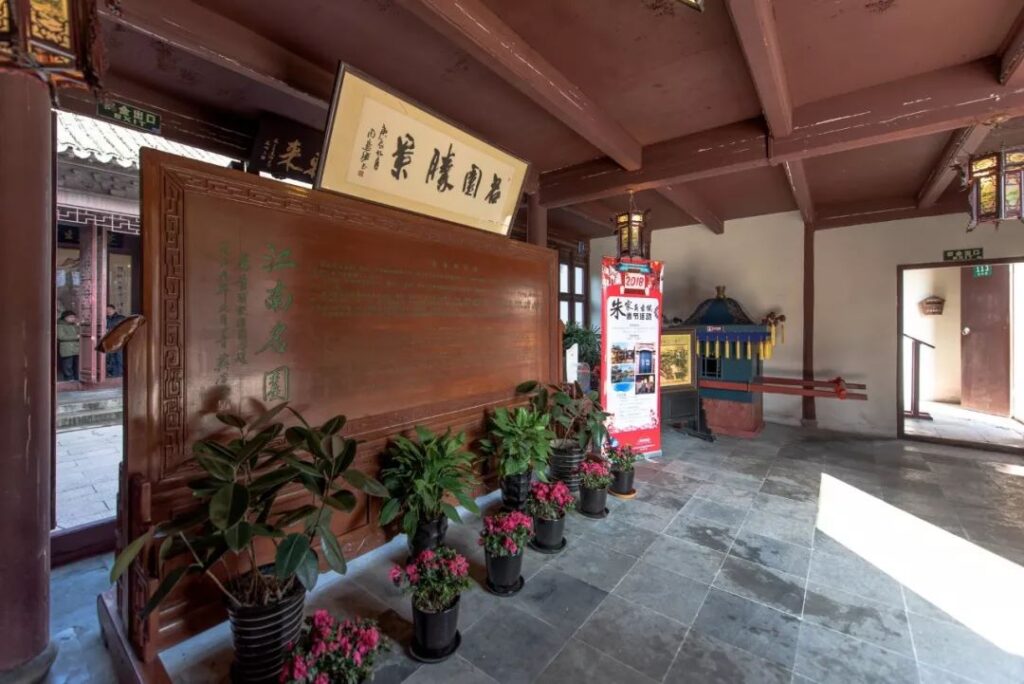
Opening hours: 08:30-16:30
Zhujiajiao City God Temple
Zhujiajiao City God Temple is the Qingpu City God’s temporary palace, located in the center of Zhujiajiao Town. It was originally located in Xuejia Creek in the south of the town.
In the 28th year of the Qianlong reign (1763), Cheng Luji from Huizhou planned to move it to its current location. The City God is one of the important deities widely worshipped in ancient Chinese folk religious culture, mostly played by famous ministers and heroes who have made contributions to the local people. It is a god worshipped by Chinese religious beliefs and Taoism to protect the city.
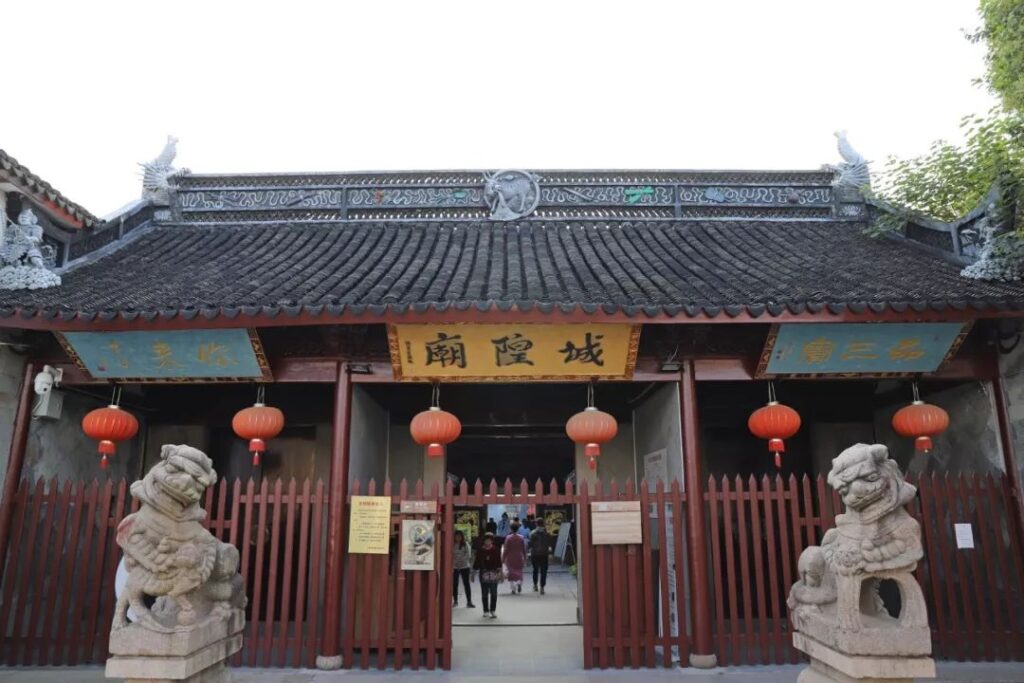
Address: Caohe Street, Zhujiajiao Town (northwest of Chenghuang Bridge)
Zhujiajiao Zhuxi Garden
Zhuxi Garden is a modern garden architecture with exquisite and transparent features, beautiful scenery, and complete supporting facilities.
The designer ingeniously arranged the three original polder heads in the garden into three scenic spots according to different seasonal characteristics: Spring Garden, Autumn Garden, and Winter Garden.

Ticket: Free
Address: 332 Xiangning Bang Road, Zhujiajiao Town
Zhujiajiao Qing Dynasty Post Office
The Qing Dynasty Zhujiajiao Post Office was first established in 1903 and is the earliest postal institution in the region.
It was one of the thirteen major postal stations in Shanghai at that time and is the only remaining old site of the Qing Dynasty Post Office in East China.
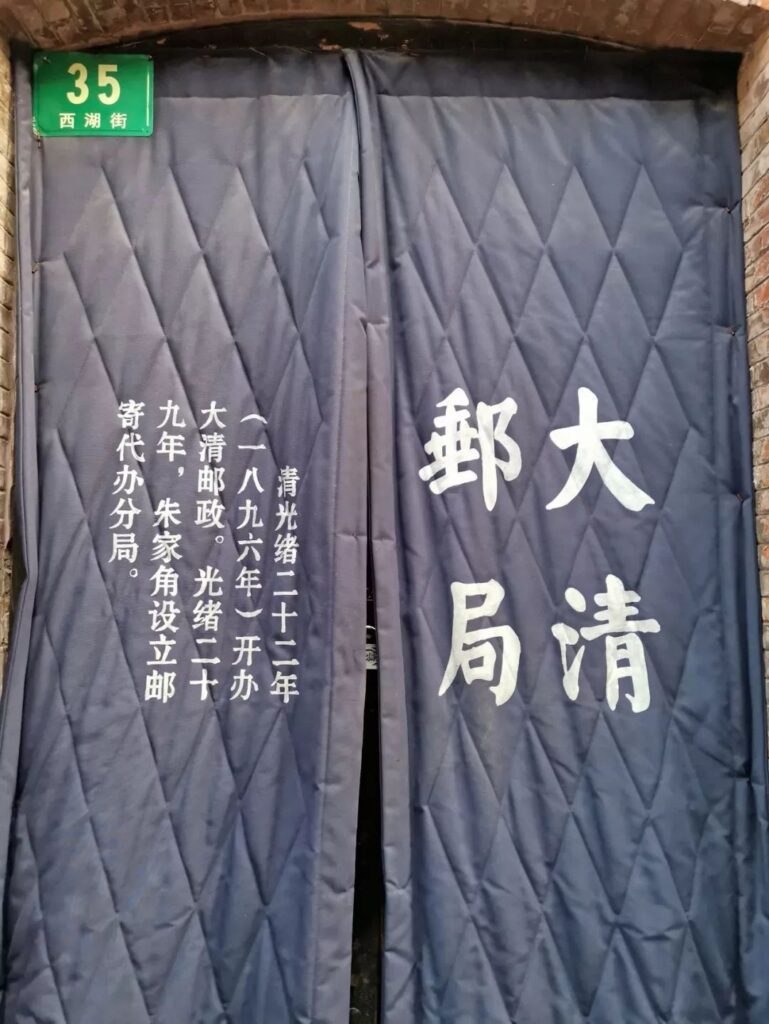
Ticket: 5 yuan
Address: 35 Xihu Street, Zhujiajiao Town (near Caoping Road)
Zhujiajiao Fangsheng Bridge
Fangsheng Bridge is the longest, largest, and highest five-arch stone bridge in the Shanghai area, known as the “First Bridge of Shanghai.”
The structure is exquisite, the shape is beautiful, long like a belt, and shaped like a rainbow. “A long rainbow over the well” is one of the ten scenes of Zhujiajiao.

Ticket: Free
Address: 127-129 Xijing Street, Zhujiajiao Town
Zhujiajiao North Street
If the food and small commodities on Qibao Old Street can make people unforgettable, then Zhujiajiao’s North Street is several times longer than Qibao.
The unique “one-line sky” structure makes people marvel. “A three-mile long street with a thousand shops” is a great place for food and shopping.
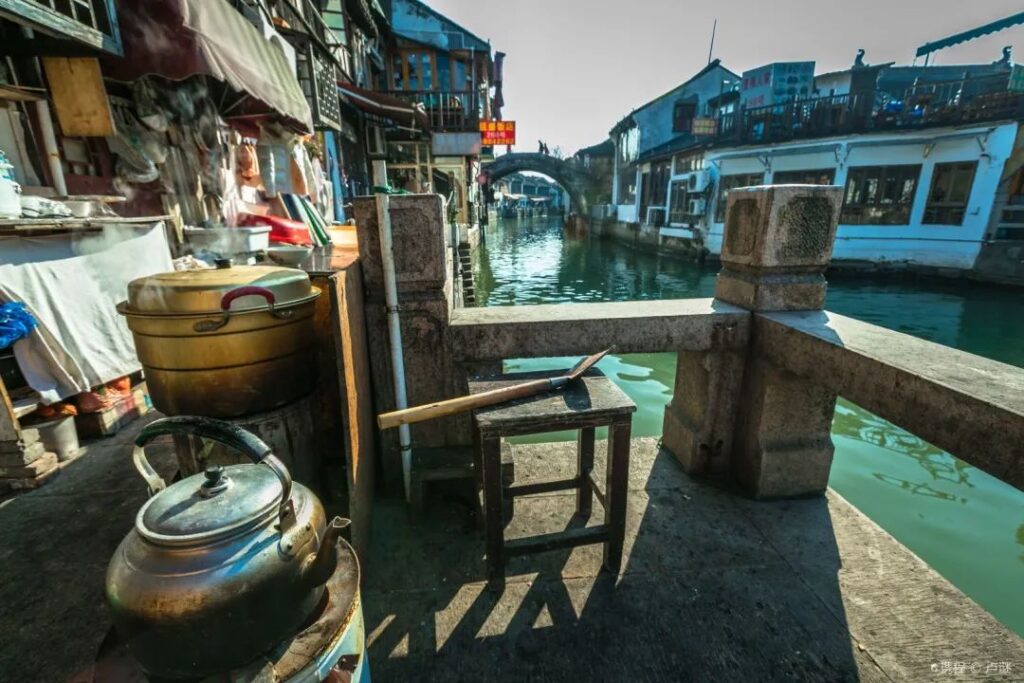
Ticket: Free
Address: Inside Zhujiajiao Ancient Town
Zhujiajiao Corridor Bridge (Huimin Bridge)
The Corridor Bridge spans the Huhu Port of the Shihe River in Zhujiajiao Town. Originally named Huimin Bridge, the east end of the bridge is the commercial center of North Street, and the west end is Caohe Street (also known as Temple Front Street).
This is the only wooden structure bridge in the ancient town and the most unique wooden bridge. Because the bridge deck is built with wooden plank railings, covered with bricks and tiles, and has upturned eaves, it is also called the Corridor Bridge.
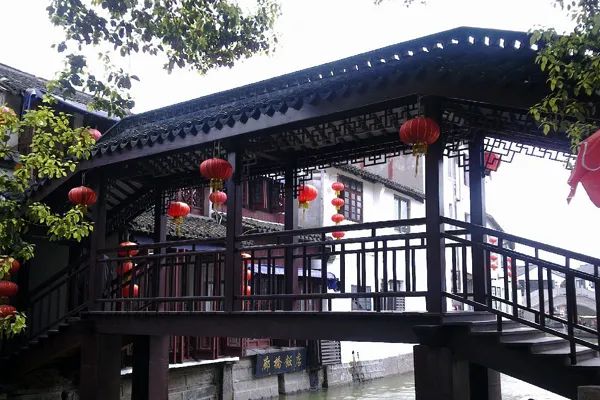
Ticket: Free
Address: Zhujiajiao Ancient Town
Zhujiajiao Food

When visiting Zhujiajiao Ancient Town, you can’t miss out on eating and drinking, especially on North Street, which is simply a food lover’s paradise. Braised pork trotters, pickled vegetables, rice dumplings, braised pork, and a dazzling array of options are available. Come on an empty stomach and leave with a full belly!
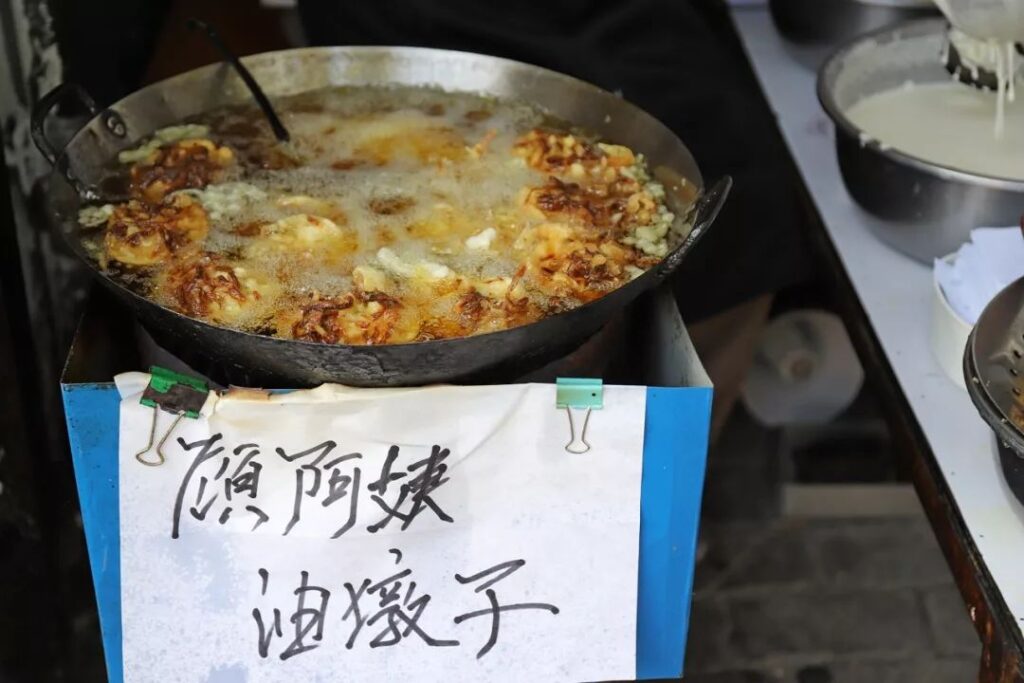
(Oil Dumplings)
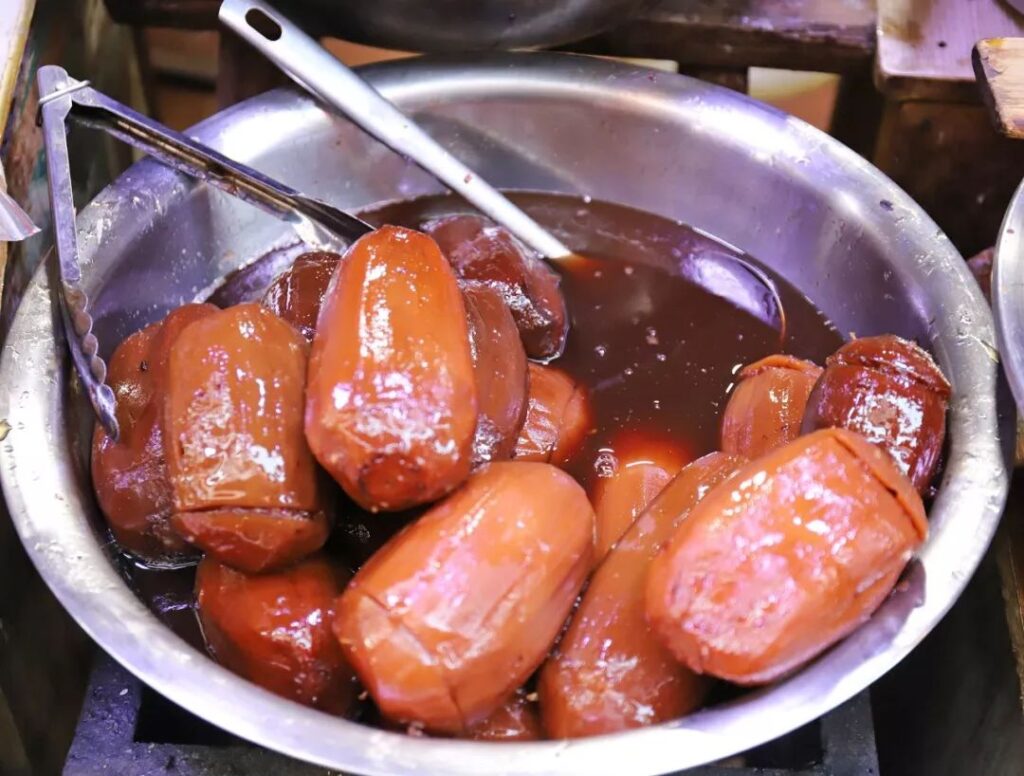
(Sweet Glutinous Rice Lotus Root)
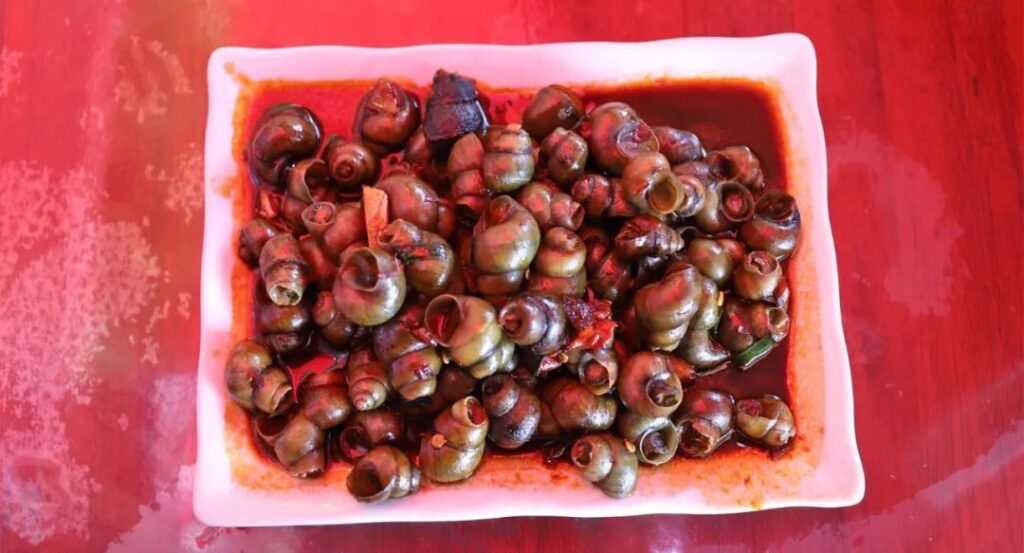
(Braised Snails)
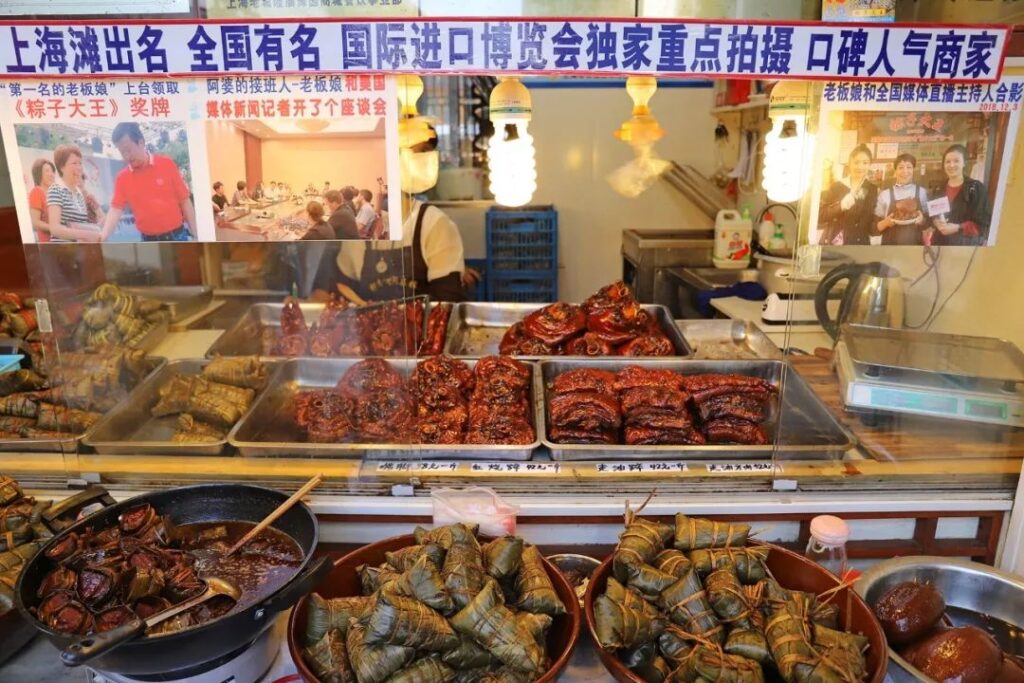
(Braised Pork Trotters)

(Candied Hawthorn)
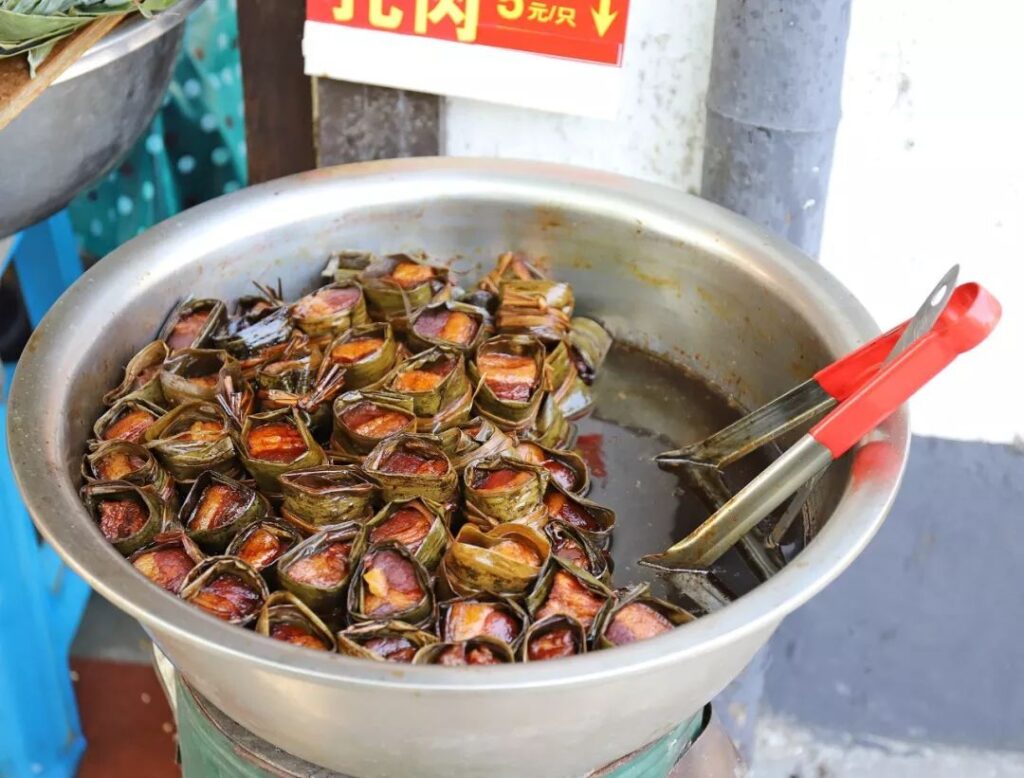
(Braised Pork)
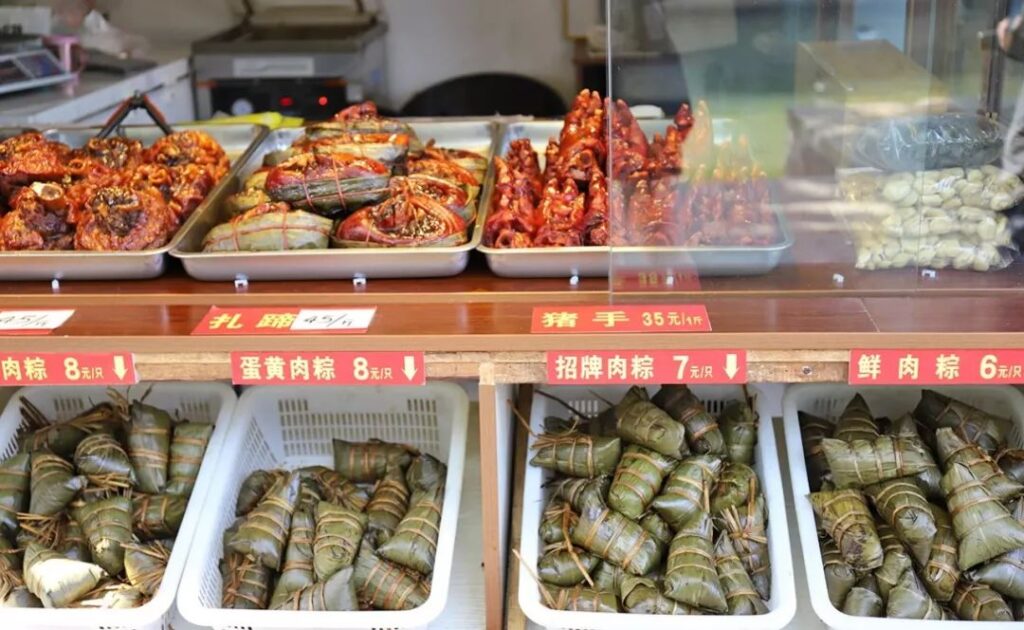
(Grandma’s Rice Dumplings)
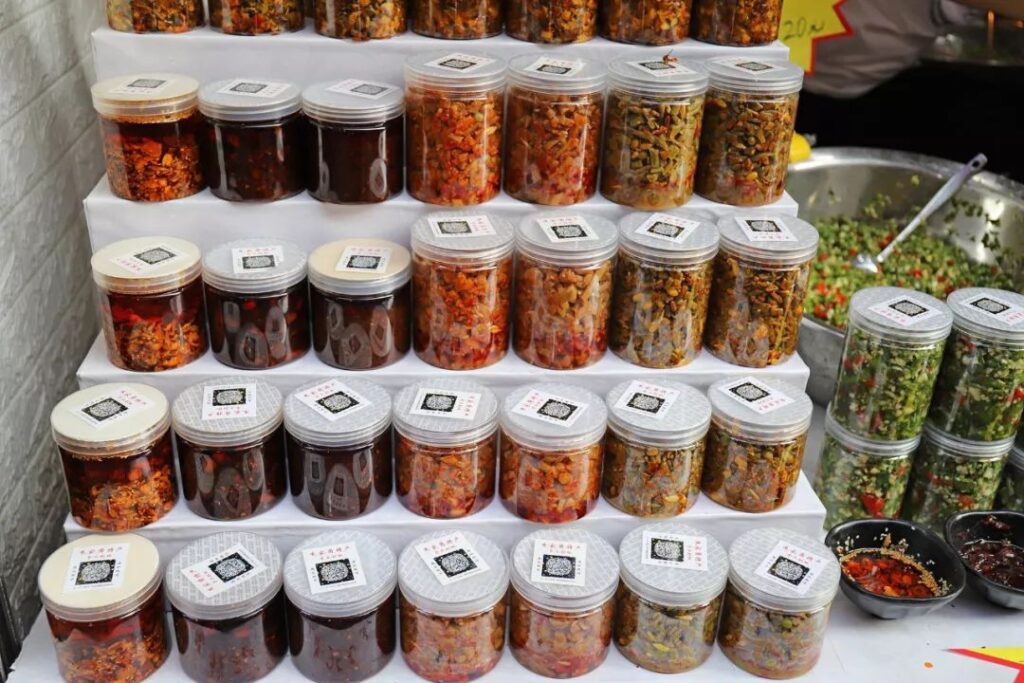
(Pickled Vegetables)
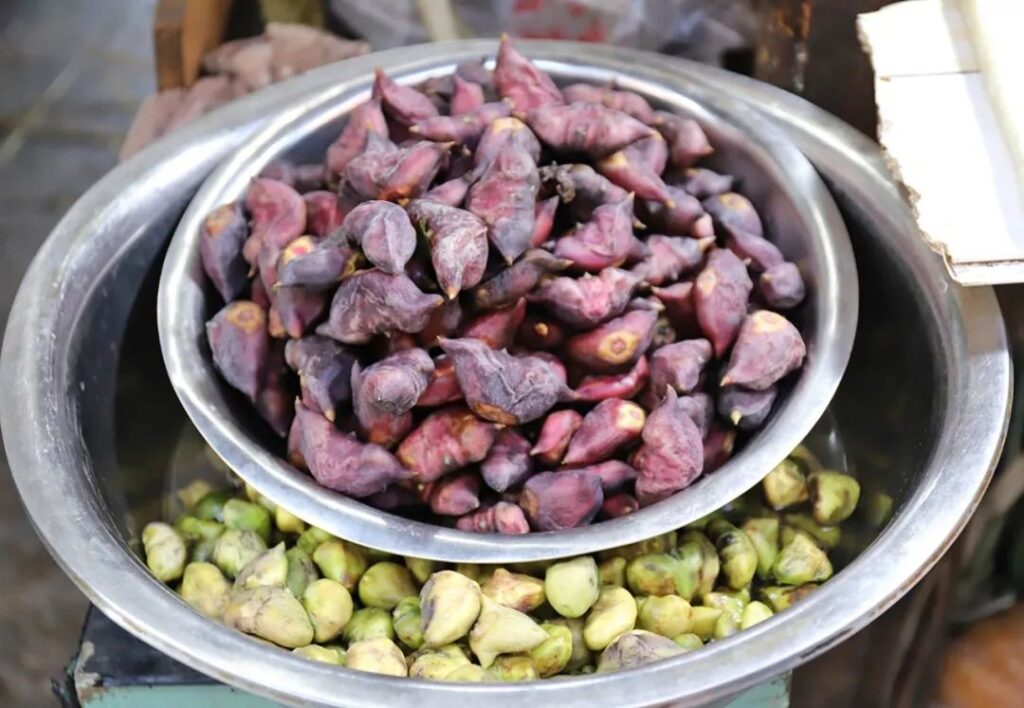
(Water Chestnuts)

(Wonton)
Zhujiajiao Travel Guide
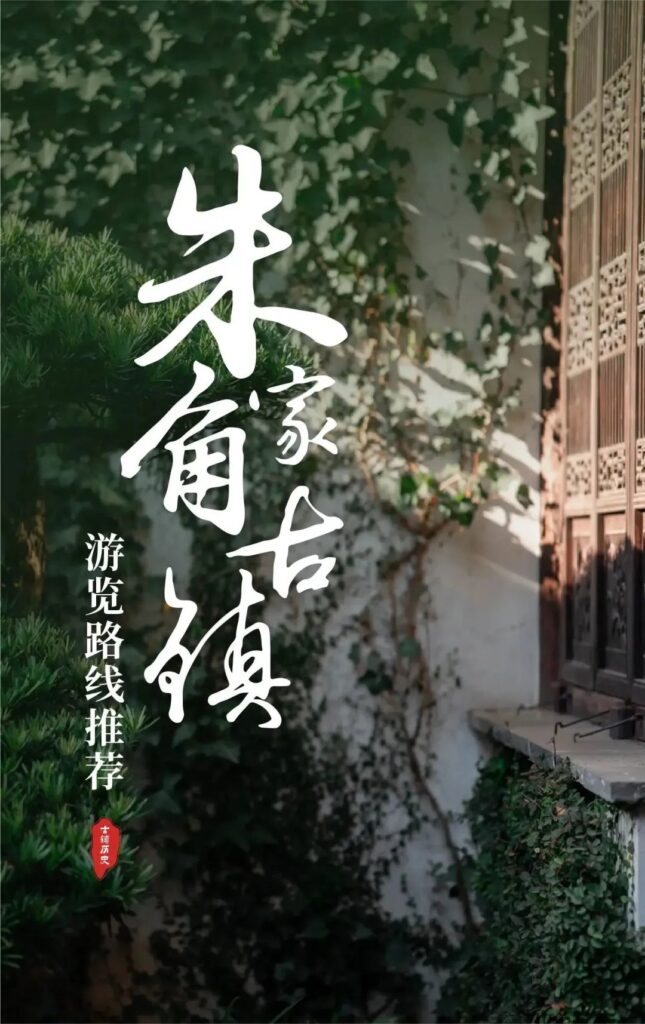
Take a boat ride and see the prosperity on both banks; walk through the old streets and see the traces of time. The classic tour route of Zhujiajiao Ancient Town covers all the highlights of the ancient town in one go, allowing you to appreciate the true charm of the town.
Recommended Route (by boat):
Kezhi Garden → Kezhi Garden Pier, take a boat → North Street Pier, board the boat → Tai’an Bridge → Yuanjin Zen Temple → City God Temple → Caohe Street → Qing Dynasty Post Office → North Street → Shanghai Handicraft Zhujiajiao Exhibition Hall → Shanghai Helong Art Museum → Fangsheng Bridge → Hexin Garden → Quanhua Watercolor Art Museum
Recommended Route (on foot):
Kezhi Garden → Hexin Garden → Fangsheng Bridge → Xinfeng Road → Meizhou Road → City God Temple Bridge → Caohe Street → Qing Dynasty Post Office → City God Temple → Yuanjin Zen Temple → Tai’an Bridge → North Street → Shanghai Handicraft Zhujiajiao Exhibition Hall → Shanghai Helong Art Museum → Fangsheng Bridge → Xijing Street → Yongquan Bridge → Quanhua Watercolor Art Museum

Spring is not late, and flowers are in full bloom. There is always a touch of spring in the ancient town that will dazzle your eyes.
Related Articles:
